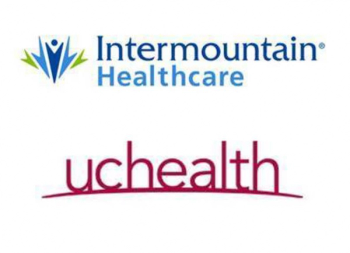
The step comes after CVS announced plans to buy Signify Health, a network of doctors delivering care to patients at home. And it’s another example of a retailer entering the primary care market.

The step comes after CVS announced plans to buy Signify Health, a network of doctors delivering care to patients at home. And it’s another example of a retailer entering the primary care market.

The system has launched a $50 million campaign to finance a new institute to improve health equity, and kindness is key. Alisahah Jackson, the institute’s president, talks with Chief Healthcare Executive about the initiative.

The measure would allow employers to offer standalone telehealth benefits, similar to vision and dental plans.

Some doctors say they wouldn’t consider getting help and worry about professional ramifications. The latest Medscape survey on burnout and depression sheds light on the mental health challenges in medicine.

Providers and health plans are managing more administrative tasks electronically, but there is still room for more progress, according to the new CAQH Index. Spending on business functions rose $18 billion in 2022.

Many older hospital patients develop delirium. Johns Hopkins researchers used artificial intelligence models to identify patients that were likely to develop delirium.

Many patients who had a virtual appointment didn’t need to go to a doctor’s office, an Epic study found. Jackie Gerhart of Epic talks about the ways telehealth can expand access.

More health systems say they are aiming to close disparities in healthcare. Susan Garfield of EY outlines steps to help move the needle.

After a spectacular 2021, funding dipped sharply in 2022, according to an analysis by CB Insights. The number of mergers and acquisitions also tumbled.

Doctors and nurses have been attacked far too often. Marisa Randazzo of Ontic discusses steps health systems can take to protect their workers.

He talks with Chief Healthcare Executive about the growth of hospital-at-home programs, Best Buy’s purchase of Current Health, and how leaders can help make home-based care succeed.

Clinics must take new approaches to nurture the relationships they built during the pandemic and ensure they are delivering the experience that will encourage patients to return.

Healthcare organizations need to weigh many factors when deciding if it’s time to find partners, analysts say.

Nearly half of all Medicare beneficiaries are enrolled in Medicare Advantage programs. Insurers hailed the milestone, but lawmakers have pressed for reforms, citing delays in approval for treatments.

Some systems will seek partners out of opportunity or necessity. Anu Singh of Kaufman Hall talked with Chief Healthcare Executive about the outlook for deals in the year ahead.

The Association of American Medical Colleges released a report that offers more insight on the nation’s physician workforce.

Jennifer Mensik Kennedy, who took the post earlier this month, said nurses need more than occasional pizza parties. Healthcare leaders need to change their work environment to help nurses thrive, she says.

Generally, cancer rates aren’t dropping as quickly in women. And Black women with breast cancer are far more likely to die than white women.

Researchers found about a quarter of adverse events are preventable, according to a new study. But many hospitals rely on voluntary reporting, so some adverse events likely aren't being captured.

Ashish Shah, CEO and founder of Dina, talked with Chief Healthcare Executive about his young company and the need to improve the coordination of care.

Most investors said they see more dealmaking taking place in the coming year, according to a new KPMG report. Inflation and rising interest rates pose challenges, but the difficult environment could spur more M&A activity.

The two health systems will stay independent, but they plan to operate a new clinically integrated network as a separate entity.

To attract and retain staff, healthcare organizations must improve the data capture equipment and systems that nurses use daily.

Stanford Medicine Children’s Health has an all-women team. Kelly Mahaney of Stanford Medicine talked to Chief Healthcare Executive about improving diversity in the male-dominated field.

Healthcare organizations must ensure patients can afford their prescriptions to reduce the risks of complications, Nele Jessel of athenahealth suggests.